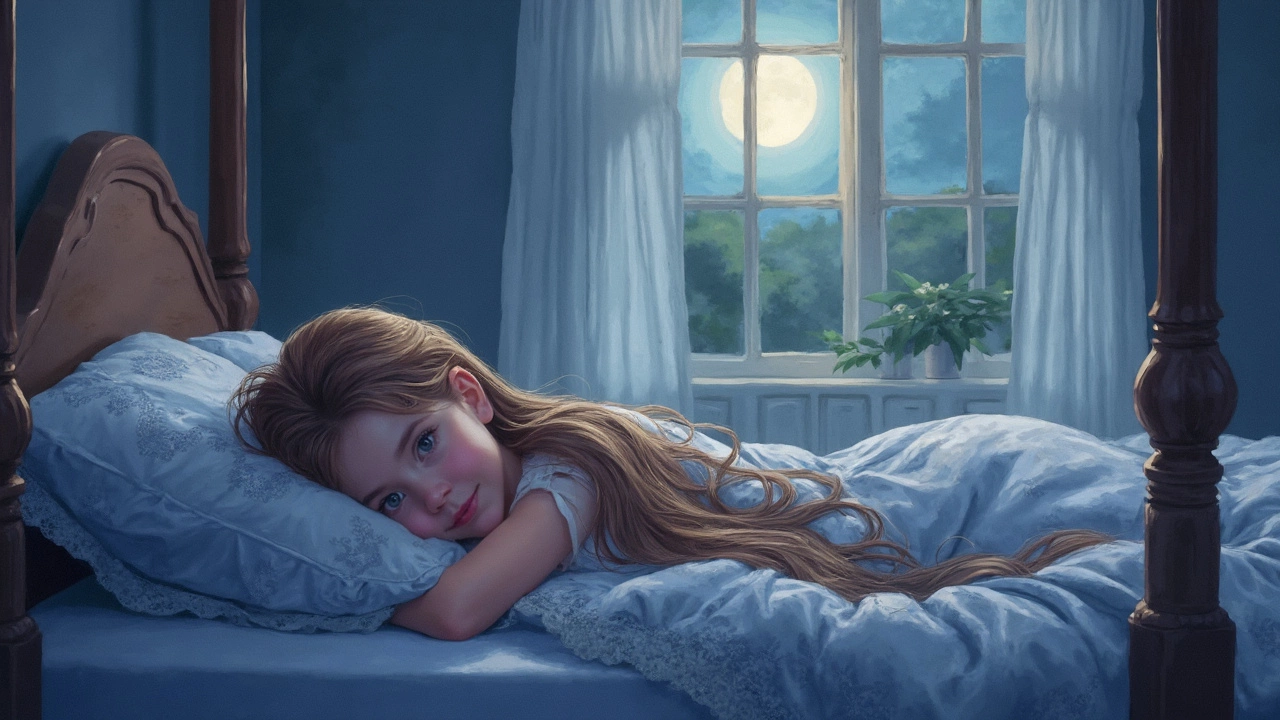Sleeping with hair extensions can seem like a juggling act, but with a little know-how, it's a breeze. The key is all about protecting those lovely strands while you catch those precious Z's without waking up to a tangled mess. Curious how to do it? We've got you covered.
Start by knowing what kind of extensions you've got. Clip-ins are different from sew-ins or tap-ins, and each type calls for its own care. So, step one: understand your extensions. This will be your guide to choosing nighttime routines that'll keep your hair looking fabulous from dusk till dawn.
- Understanding the Extensions
- Preparing Your Extensions for Sleep
- Choosing the Right Sleeping Accessories
- Protective Hairstyles for Bedtime
- Morning Care and Maintenance
Understanding the Extensions
Alright, let's break it down. Hair extensions come in various types, and knowing which one you have is crucial for proper care. The most common types are clip-in extensions, sew-in extensions, and tape-in extensions. Each has its own way of attaching to your hair, and this affects how you should take care of them, especially when you're sleeping.
Clip-In Extensions
Clip-ins are popular for their flexibility and ease of use. They're great for temporary styles, as you can simply take them out at night. Keeping them unclipped and stored properly ensures they stay neat and tangle-free.
Sew-In Extensions
Sew-ins, on the other hand, are more permanent. They're woven into your natural hair, offering a more seamless look. With sew-ins, you're going to need to be gentle when sleeping to avoid putting strain on your natural hair and the extensions.
Tape-In Extensions
Tape-ins offer a nice middle ground with a mix of permanence and ease. Applied by sandwiching your natural hair between extensions taped together, they need a bit of TLC to prevent loops and kinks. Sleeping with them requires a bit more caution, like using a silk pillowcase to reduce friction.
| Type | Attachment Duration | Ease of Maintenance |
|---|---|---|
| Clip-In | Temporary | Easy |
| Sew-In | 6-8 weeks | Moderate |
| Tape-In | 4-6 weeks | Moderate |
Understanding the type of extension you have helps you tailor your sleep routine to avoid damaging your hair. This not only protects the extensions but also keeps your natural hair healthy.
Preparing Your Extensions for Sleep
So, you're ready to tuck in for the night, but what about those hair extensions? Keeping them neat and tangle-free while you sleep isn't hard, but it does take some prep.
Brush and Detangle
First things first: brushing. Use a gentle brush or a wide-toothed comb to remove tangles. Start from the ends and work your way up to avoid pulling too hard on the bonds or clips. This keeps your extensions looking sleek and helps them last longer.
Protection Plan
Once your hair is tangle-free, it's time to think about protection. One of the simplest tricks is braiding. Loose braids work wonders for keeping both your natural hair and extensions in check as you move in your sleep.
Nighttime Hair Care Products
A little leave-in conditioner or a softening product can make a difference too. If your extensions tend to dry out, these products can help maintain their moisture overnight. Just make sure whatever you use is suitable for the type of extensions you have.
Satin or Silk Pillowcase
Let's not forget about your pillowcase. A silk or satin pillowcase reduces friction, which means less frizz and fewer tangles come morning. It's a simple swap that can have a big impact.
Your Evening Routine Checklist
- Brush out tangles, starting from the ends.
- Style into a loose braid or ponytail.
- Apply suitable leave-in products for added moisture.
- Make the switch to a satin or silk pillowcase.
Stick to these steps, and you'll wake up with extensions looking just as fabulous as when you went to bed!

Choosing the Right Sleeping Accessories
Ever woken up to hair that's more of a bird's nest than a mane? You're not alone. Picking the right sleeping accessories can make a world of difference in keeping your hair extensions looking like you just left the salon.
Silk and Satin Pillowcases
Your bed might be your sanctuary, but a rough cotton pillowcase isn’t doing your extensions any favors. Swapping out cotton for a silk or satin pillowcase is one of the easiest ways to help protect your extensions as you sleep. These soft fabrics reduce friction, so strands glide smoothly and don't tangle.
Silk Bonnet or Scarf
Wrapping your hair in a silk bonnet or scarf can be your secret weapon against night-time disasters. Not only does it cut down on friction, just like those pillowcases, but it also keeps your extensions snug and secure. Plus, these bonnets are easy to find and come in all sorts of fun colors and patterns.
Hair Nets
Stepping it up a notch, a hair net can be an extra layer of protection. Nets can keep everything held together tight without feeling like you've locked up Fort Knox around your head. They're especially handy for those really long or thick extensions that might not fit comfortably under a bonnet.
Optional: Sleep Mask
Okay, so a sleep mask isn’t directly for your hair, but let’s face it, beauty sleep is real. A good night's rest is crucial, and a sleep mask can help block out distractions ensuring you get the proper shut-eye your amazing extensions deserve.
Want the stats? Check this out:
| Material | Friction Level |
|---|---|
| Cotton | High |
| Satin | Low |
| Silk | Lowest |
See how a simple change can seriously upgrade your hair game? It's all about the accessories you choose and the benefits they bring. Ready to wake up to awesome hair? Let's make tangled, bedhead mornings a thing of the past.
Protective Hairstyles for Bedtime
Making sure you protect your hair extensions while you snooze is all about choosing the right hairstyle before bed. These styles aren't just about keeping your extensions in place; they also help prevent any unnecessary tension on your roots and tangles that could lead to damage.
Loose Braids
Going for loose braids is a game-changer for those with extensions. Keeping it loose prevents strain, while braiding itself minimizes friction between your hair and the pillow. Doing a couple of simple, loose braids can keep your extensions neat and tidy.
Low Ponytail
A low ponytail secured with a hair tie that's not too tight is another great option. It's quick, easy, and reduces breakage. Avoid using elastic bands that can tug on your hair, opt for fabric-covered scrunchies instead.
Satin or Silk Scarves
Wrapping a satin or silk scarf around your hair is another way to protect your hair extensions from the roughness of cotton pillowcases. Wrap your hair in a protective style and cover it with a scarf to reduce friction.
"Silk and satin are your hair's best friend. They help retain moisture and prevent rubbing that leads to split ends," says renowned hairstylist Sarah Blake.
Fun fact: A study found that people who use silk pillowcases experience 43% fewer split ends. So, if you can't be bothered with scarves, consider swapping your pillowcase!
These protective hairstyles not only keep your extensions looking good, they also promote the overall health of your natural hair. With these simple bedtime tricks, you can maintain your extensions without stress or hassle.

Morning Care and Maintenance
Waking up with hair extensions isn't the end of the story. A few quick steps in the morning can make a world of difference in maintaining their look and longevity. Let's dive into what you should do once you're out of bed.
First Things First: Detangling
Started your day with a bit of bedhead? No worries—begin with some gentle detangling. Use a wide-tooth comb or a brush specifically designed for extensions, gently working from the ends upwards. This minimizes any snagging or pulling on the bonds.
Time to Refresh
If your extensions feel a bit flat, spritz them lightly with a leave-in conditioner or hair care mist. This not only adds moisture but helps in defining any curls or waves.
Styling Tips
- Keep the heat tools on a low setting to avoid damaging the bonds.
- Consider heatless styles like braids or buns for a break from daily styling.
- If you need to straighten or curl, always use a heat protectant spray.
Weekly Checks and Balances
Don’t forget to slot in some time for inspecting your extensions. Make sure they’re sitting comfortably and aren’t causing stress to your natural hair. Regularly checking can prevent little issues from becoming big headaches.
| Time | Activity |
|---|---|
| 5 minutes | Detangling |
| 5 minutes | Refreshing and Styling |
| 5 minutes | Weekly Health Check |
By incorporating these easy morning habits, your extensions will maintain their shine and style, helping you step out feeling confident every single day!
